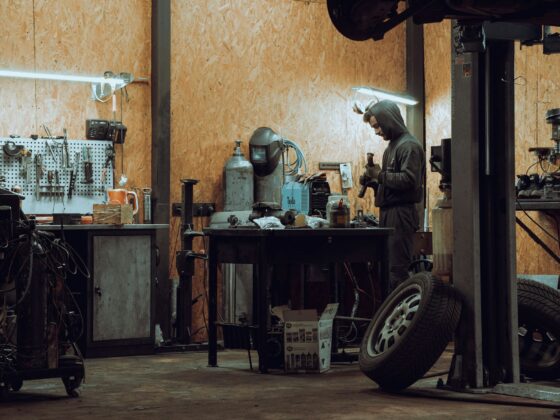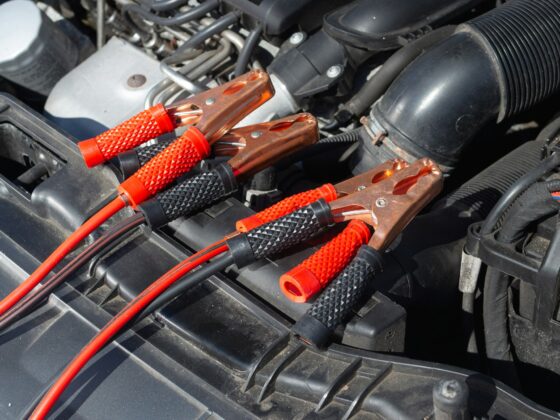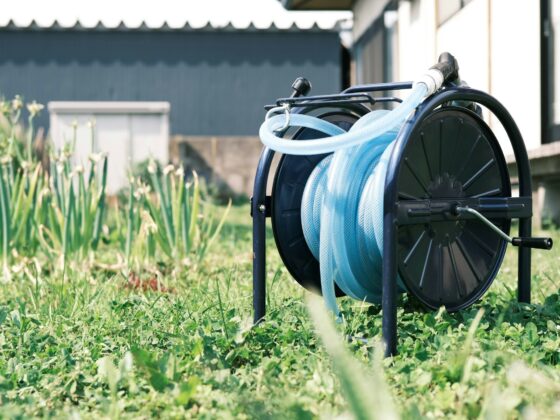Introduction
Dust is one of the biggest enemies of a clean, efficient workshop. It clogs up tools, shortens the life of equipment, creates unnecessary cleanup, and—most importantly—can even pose serious health risks if left unchecked. The good news? You don’t need a top-of-the-line dust collection system to make a major difference.
With a few smart upgrades and a little bit of strategic planning, you can dramatically reduce the amount of dust in your workspace without spending a fortune. In this guide, we’ll show you how to identify where dust is coming from, implement low-cost solutions that really work, and decide when it’s worth investing a little more for long-term improvements.
This article contains Amazon Associate links. As an Amazon Associate, we earn from qualifying purchases at no cost to you.
Step 1: Identify the Sources of Dust
Before you start trying to control dust, it’s important to figure out exactly where it’s coming from. Most workshops and garages have a few key activities that generate the majority of airborne and surface dust. By targeting these sources first, you’ll get the biggest results with the least effort.
- Woodworking Tools
Table saws, miter saws, sanders, and routers are some of the biggest dust offenders. Fine wood particles not only settle everywhere but also stay suspended in the air long after you’re done working. - Metal Grinding and Cutting
Using grinders, cut-off wheels, and sanders on metal produces fine dust and sparks that quickly cover surfaces—and can even pose fire risks if not cleaned up properly. - Concrete and Drywall Work
Drilling, cutting, or even sweeping concrete floors can kick up massive clouds of ultra-fine dust that’s tough to remove and bad for your lungs. - General Sweep-Up and Air Movement
Simply sweeping the floor or opening a door on a windy day can reintroduce settled dust into the air. Poor ventilation and airflow patterns can also make dust linger.
Pro Tip:
Spend a few days working normally and observe which tasks leave the biggest mess behind. Jot down the tools and activities that kick up the most dust—you’ll know exactly where to focus your first upgrades.
Step 2: Simple Dust Control Upgrades Under $100
You don’t need a full dust collection system to start winning the battle against workshop dust. In fact, a few smart, affordable upgrades can make a massive difference right away—especially if you target the biggest dust sources you identified earlier.
- Use a Shop Vac with a HEPA Filter
Upgrading your dust control setup starts with a quality shop vac—and a HEPA filter makes all the difference. The BOSCH VAC090AH Portable 9 Gallon Dust Extractor comes with an automatic filter cleaning system and a true HEPA filter that captures 99.97% of particles. It’s a major upgrade if you’re serious about keeping fine dust out of your air.
➔ Check out the BOSCH VAC090AH Dust Extractor on Amazon - Add a Dust Separator to Your Shop Vac
Dust separators trap heavy debris before it even reaches your vac’s filter, improving suction and making your equipment last longer. The Dustopper PRO is a compact, efficient solution that fits standard 5-gallon buckets, comes with all the connection hardware, and is made in the USA.
➔ Check out the Dustopper PRO Dust Separator on Amazon - DIY or Budget Air Filtration
You can build a super-effective air cleaner by attaching a furnace filter to a box fan, or invest in a small portable air filtration unit. Running it while you work helps clear airborne dust that would otherwise settle everywhere. - Heavy-Duty Floor Mats
Placing heavy-duty mats at the entry points of your garage or shop helps trap dirt, sawdust, and debris before it gets tracked across the entire workspace. - Better Sweepers and Dust Mops
Instead of stirring dust into the air with a traditional broom, consider investing in anti-static sweepers or microfiber dust mops that trap dust instead of moving it around.
Pro Tip:
Bundle a few of these upgrades together to attack both surface dust and airborne particles at the same time—you’ll notice a major difference after just a single weekend of work.
Step 3: Better Dust Collection Tools
Once you’ve tackled general dust with a shop vac and air filtration, the next step is going straight to the source: your power tools. Many woodworking and metalworking tools throw off large amounts of fine dust, but with a few smart upgrades, you can capture it before it ever hits the air.
Benchtop Dust Collectors
If you do a lot of sanding, grinding, or carving at a workbench, a portable benchtop dust collector can vacuum up fine particles in the immediate work zone. They’re a great middle-ground solution before upgrading to a full central dust system.
Add Dust Ports to Your Tools
Many saws, sanders, and routers come with basic dust ports—but if yours doesn’t, retrofit kits are widely available. Universal adapters let you connect hoses from your shop vac or dust extractor directly to the tool, capturing most dust at the point of creation.
Use Universal Dust Shrouds and Hoods
For larger or older equipment without built-in dust collection, adding a dust shroud or hood makes a massive difference. Shrouds for grinders, sanders, and circular saws are easy to install and keep dust from spreading across your work area.
Flexible Hose Systems
Investing in flexible, high-quality dust collection hoses lets you easily move between tools without setting up an elaborate permanent system. Quick-connect fittings can make the swap even faster, saving you time during busy projects.
Final Step: Improve Your Workspace Layout to Control Dust
Even with great tools and dust collection upgrades, your shop’s layout can make a big difference in how effectively you control dust. A well-planned workspace helps contain dust, improve airflow, and make cleanup easier—without requiring major renovations.
- Position High-Dust Tools Near Doors or Windows
If possible, place your most dust-producing tools like table saws, miter saws, or sanders close to a garage door, side door, or large window. This setup allows you to easily vent airborne dust outside instead of letting it circulate through the entire workspace. - Create “Dirty” and “Clean” Zones
Divide your shop mentally (or even physically) into zones:- Dirty Zone: High-dust tasks like cutting, sanding, or grinding.
- Clean Zone: Tool storage, assembly benches, and finished work areas.
Keeping dusty tasks isolated helps protect your clean tools and projects.
- Use Plastic Curtains or Dust Dividers
If your shop has the space, hanging a simple plastic curtain or installing a dust partition between zones is a huge help. It prevents airborne particles from drifting into storage areas or clean benches. - Direct Airflow Thoughtfully
Set up portable fans or ventilation systems so that dust naturally moves toward an exhaust point (like a door or filtration unit), not deeper into the shop. Think about how opening a door or running a fan changes the way dust travels during a job.
Pro Tip:
If you regularly use mobile tools, consider setting up a temporary “dust tent” using a tarp and PVC pipe frame. It’s an inexpensive way to contain sanding or cutting messes on big projects.
Conclusion
Creating a dust-free workshop might sound like an expensive, overwhelming project—but as you’ve seen, small, smart upgrades can make a huge impact without draining your budget. By identifying your biggest sources of dust, adding simple improvements like a HEPA shop vac and a dust separator, and capturing debris directly at the tool, you’ll drastically cut down on mess, protect your health, and extend the life of your equipment.
Even if you’re starting small, each improvement builds on the last. Over time, layering these simple fixes with smart workspace layout decisions and a few targeted splurges can transform your garage or shop into a cleaner, safer, and far more enjoyable place to work. Take the first step today—you’ll notice the difference after just a few projects.









